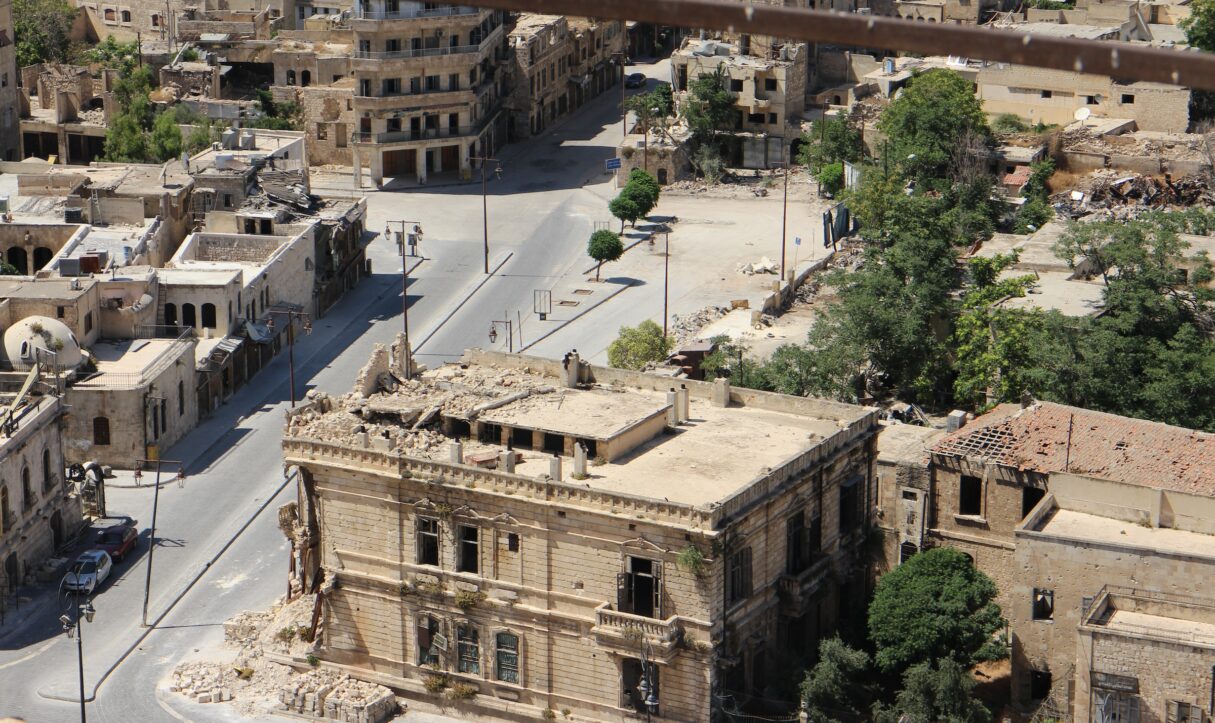In March 2023, the war in Syria will mark its 12th year. Analysts estimate that the conflict has killed nearly half a million people and displaced over 7 million Syrians around the world. Yet, the conversation about the conflict is one that is still often painted with the broad brush of “civil war.”
The United States has provided over $1 billion in training, arms, and other forms of assistance to rebel groups in an effort to overthrow the Assad regime — and has not maintained a transparent record of its arms trade and the use of those arms on innocent Syrians. Russia spends approximately $2.4 million to $4 million per day on its airstrikes in Syria, an estimate based on the military aircraft and munitions being used as well as personnel deployments directly supporting the Syrian government led by President Bashar al-Assad.
A complex array of actors, including various rebel groups, extremist organizations, and international foreign powers has characterized the Syrian war. But the lack of transparency regarding US and Russian military operations stands out.
THE OPAQUENESS OF MILITARY OPERATIONS IN SYRIA
Washington has often neglected to describe its counterterrorism operations worldwide, specifically in Syria. Over the past decade, the continuance of the war in Syria has fueled arms trafficking, with illicit networks functioning in the region and capitalizing on the chaos and availability of weapons to advance profits. The boost in black market arms sales could have lasting effects on access to, and availability of, weapons and has contributed to proliferation across the Syrian territories.
The consequences of the United States and Russia’s lack of transparency in their military operations and weapons trade in Syria have left the country in a continuous cycle of mourning and loss.
While the Pentagon regularly publishes bare-bones summaries of civilian casualty incidents, it ordered a new, high-level investigation of the 2019 Syria airstrikes in May 2022. But in the rare cases where failings are publicly acknowledged, they tend to be characterized as unfortunate, unavoidable, and uncommon, with a lack of explanation and accountability. So, it is not surprising that The New York Times’ investigation of the airstrike garnered the same reaction from the Pentagon; the United States denied any wrongdoing or violations in the strike.
The New York Times’ investigation of Task Force 9 revealed details about the unit’s military operations in Syria that accounted for civilian deaths that were held undisclosed. According to the report, Task Force 9 has been involved in a number of covert operations in Syria without formal authorization from the Syrian government or the UN. The investigation raised questions about the effectiveness and legality of the US military operations in Syria and the potential for backfire from the covert nature of the unit’s actions. The report also found that the strike raid resulted in the death of roughly 70 individuals, including women, children, captured members of ISIS, and numerous wounded men who were taking refuge at the targeted camp.
Task Force 9 has operated in such secrecy that, at different time periods, it did not inform even its own military partners of its actions. For example, in the case of the Baghuz bombing, the US Air Force command in Qatar was not informed of any possible strikes. The investigation also revealed that despite the military implementing strict guidelines to safeguard civilians, the task force repeatedly found ways to bypass them. The teams responsible for counting civilian casualties were often constrained by a lack of time, resources, and motivation to conduct accurate assessments. Additionally, troops were rarely held accountable for causing civilian deaths.
Russia entered Syria’s conflict at its peak in September 2015 on the side of Assad’s regime, allowing Damascus to clock up victories in the decade-long conflict against its own people. As of now, Moscow has not officially announced their plans to leave, and military forces continue to be present in the country.
The Syrian Observatory for Human Rights has stated that Russian air strikes and artillery shells have killed 18,000 people, including nearly 8,000 civilians. In a 40-page report by the Syrian Network for Human Rights, another monitoring group, it is alleged that 6,239 civilians have been killed, including 1,804 children, at the hands of Russian forces. Human rights monitors have accused Russia of committing horrific attacks on Syrian civilians, including indiscriminately bombing populated areas and targeting hospitals to degrade the living conditions in areas held by rebel forces.
Additionally, analysts have hypothesized that the tactics used by the Russian military operations in Syria were used as a “training ground for men and equipment” to replicate in its war in Ukraine. To date, no international organization has held Russia accountable for its lack of transparency regarding its military operations in Syria. In 2019, the UN released a report on the deaths of civilians in Syria, but Russia denied any wrongdoing and used its veto power on the UN Security Council to block any attempts to hold it accountable for its actions there. Human Rights Watch also published a 160-page report that examines the abusive military strategy in which the Syrian-Russian alliance repeatedly violated the laws of war against the 3 million civilians. Russia did not respond to the report.
SEEKING ACCOUNTABILITY
While both the United States and Russia have repeatedly stated that their ultimate goal in Syria is to defeat extremist groups such as ISIS, their approaches have complicated the situation in the country and prolonged the conflict with clear evidence of a lack of transparency from both parties involved. While today ISIS is a downgraded threat and has lost the control it once had, questions with regard to a lack of military operations transparency, the creation of a black market for weapons, and the true number of civilian deaths remain unclear.
The consequences of the United States and Russia’s lack of transparency in their military operations and weapons trade in Syria have left the country in a continuous cycle of mourning and loss.





















